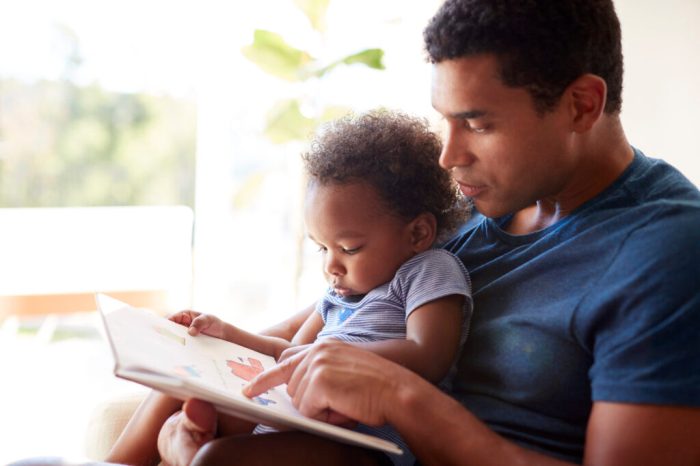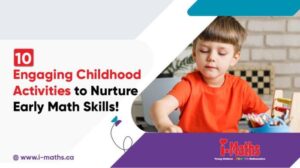
Step right up, folks! Welcome to the magical world of Early Literacy, where words are like candy and reading is the ultimate treasure hunt! Imagine a place where toddlers confidently wield their crayons as if they were light sabers and reading stories becomes a delightful game of “What happens next?” In this whimsical journey, we’ll uncover how early literacy lays the foundation for a bright future, transforming tiny tots into voracious readers and scholars of tomorrow.
Early literacy isn’t just a buzzword tossed around in parenting circles; it’s the secret sauce that boosts child development and academic success. Research shows that the earlier children engage with books, the better equipped they are for the rigors of school and life. So, buckle up as we explore the significance of early literacy and discover inventive strategies to spark a lifelong love for reading in our little ones!
Importance of Early Literacy

Early literacy is like the magical key that unlocks the treasure chest of knowledge for our little ones. As children begin to recognize letters, sounds, and words, they’re not just playing with letters; they’re building the foundation for a lifetime of learning. This foundational skill set is crucial for their development, ensuring they grow into confident readers and effective communicators.
But wait, there’s more! The significance of early literacy stretches far beyond just knowing how to read; it sets the stage for academic success and lifelong advantages.The role of early literacy in child development cannot be overstated. Research shows that children who develop strong literacy skills early on tend to perform better in school. According to the National Institute for Literacy, children who are proficient readers by the end of third grade are more likely to succeed in middle and high school.
This correlation demonstrates that early literacy skills are not just beneficial but essential for long-term academic achievement.
Long-term Benefits of Early Literacy Skills
Investing in early literacy skills pays off in spades. These skills are the building blocks for future learning, and their impact can be seen across various domains. Here are some key long-term benefits of developing early literacy:
- Enhanced Vocabulary: Early readers tend to have a broader vocabulary, which contributes to better writing skills and higher comprehension levels as they progress through school.
- Improved Academic Performance: Studies suggest that children with strong early literacy skills often excel in subjects beyond reading, including math and science, due to their enhanced problem-solving abilities.
- Increased Self-Esteem: Confident readers are more likely to participate in classroom discussions and activities, fostering a love for learning that fuels their academic journey.
- Better Social Skills: Literacy promotes communication, allowing children to express their thoughts and feelings more effectively, leading to better relationships with peers and adults.
Research backs up these benefits as well. A study by the Annie E. Casey Foundation showed that children who do not read proficiently by the end of third grade are four times more likely to drop out of high school compared to their proficient peers. This staggering statistic highlights the critical need for early literacy programs that can bridge the gap before it widens.
“Literacy is a bridge from misery to hope.” – Kofi Annan
Incorporating early literacy activities, such as reading aloud and engaging with books, can fundamentally change the trajectory of a child’s life. It’s not just about reading; it’s about opening doors to new worlds, ideas, and future opportunities. Investing time and resources in enhancing early literacy will ultimately create a more educated and capable society, where children can thrive and reach their full potential.
Strategies to Promote Early Literacy
Early literacy is like the secret sauce that makes every child’s meal of knowledge extra delicious. The earlier we can sprinkle in those reading skills, the tastier their educational journey will be! The classroom is great, but the magic really happens at home. Let’s dive into some strategies that even the busiest of parents can pull off while wearing pajamas and sipping coffee!
Encouraging Reading at Home
Creating a vibrant reading environment at home can be as simple as turning your living room into a mini-library. Here are methods that can transform your home into a literacy wonderland:
- Book Nooks: Designate a cozy corner with pillows and blankets where your little ones can snuggle up with their books. Bonus points if you add twinkling fairy lights for that extra whimsical touch!
- Reading Time Rituals: Set a specific time each day for family reading. Maybe it’s before bedtime or during breakfast—just make sure it’s a time everyone looks forward to.
- Variety is the Spice of Life: Stock up on a mix of genres—picture books, fairy tales, and even comics. This variety keeps kids curious and engaged, like an all-you-can-read buffet!
Engaging Activities to Enhance Vocabulary and Comprehension Skills
Engaging activities can turn learning into an adventure! Here are some fun ways to elevate vocabulary and comprehension skills, ensuring that little brains are buzzing like busy bees:
- Word Games: Play games like Scrabble or Boggle, but with a toddler twist! Use colorful letters and let kids create words from their favorite animal names—because who doesn’t love a “Giraffetastic” game?
- Picture Walks: Before reading a new book, flip through the pages and discuss the illustrations. Ask your child what they think is happening in each picture. It’s like being a literary detective!
- Rhyming Riddles: Create silly rhymes together. For instance, “The cat in the hat sat on a mat!” This activity helps with phonemic awareness while providing giggles.
Integrating Storytelling into Daily Routines
Storytelling can easily weave itself into the daily fabric of life. Here are some enchanting ways to incorporate storytelling into everyday routines:
- Storytime While Cooking: While preparing dinner, narrate a fun culinary adventure. For instance, “Once upon a thyme, a brave carrot saved the day!” Engage your child by letting them add to the story, making it a true team effort.
- Car Ride Tales: Turn those mundane car rides into epic journeys by creating stories based on road signs or passing vehicles. Invent characters who live in the “big red barn” or the “fancy blue car”!
- Bedtime Stories with a Twist: Allow your child to be the storyteller at bedtime. They can narrate a story about their day or make up a new tale involving their favorite stuffed animals. Imagine the thrilling adventures of Sir Fluffy the Brave!
“Every time you read with your child, you unlock a new world of imagination and possibility.”
Connections to Related Topics
When we think of early literacy, it doesn’t exist in a vacuum, floating in a sea of letters and sounds. Nope! It’s more like a delightful cocktail party where early childhood education practices, elder care programs, and even the heavy topics of death and dying all mingle together in surprising ways. Each of these connections forms a web that influences children’s development and the understanding of complex themes throughout life.
So, let’s dive into these fascinating intersections where literacy is the star of the show!
Relationship Between Early Literacy and Early Childhood Education Practices
Early literacy is like the peanut butter to the jelly of early childhood education practices. Together, they create a nourishing and delicious concoction that helps children grow and thrive. Research shows that robust early literacy initiatives are tied to better educational outcomes, and here’s how they work hand in hand:
- Curriculum Integration: Early childhood education programs that prioritize literacy embed reading and writing activities throughout the day. Imagine a world where finger painting leads to storytelling, and snack time includes reading picture books about fruits—yum and fun!
- Language-Rich Environments: Educators create environments filled with words, songs, and rhymes, encouraging children to explore language in playful ways. It’s like a treasure hunt for words, where every rhyme is a shiny gold coin.
- Parental Involvement: Engaging parents as partners in literacy development boosts children’s progress. Parents become literacy superheroes, reading bedtime stories and sharing silly poems, making literacy a family affair!
- Assessment and Feedback: Regular assessments help educators tailor literacy instruction to meet individual children’s needs. They can fine-tune their teaching like a master chef adjusting a recipe—always aiming for that perfect flavor of literacy.
Influence of Early Literacy Initiatives on Elder Care Programs
Believe it or not, early literacy initiatives can have a ripple effect that reaches all the way into elder care programs. It’s like throwing a pebble into a pond and watching the waves carry the message of literacy far and wide. Here’s how:
- Intergenerational Programs: Many elder care facilities now partner with schools to create intergenerational reading programs. Picture children reading to seniors, leading to shared joy and sparking delightful conversations about life experiences—talk about a story hour with a twist!
- Cognitive Engagement: Promoting literacy among the young fosters lifelong learning, which benefits the elderly when they engage in reading and writing activities. It’s a brain exercise for all ages, keeping minds sharp like a well-honed pencil!
- Emotional Connection: Reading stories can evoke memories and emotions in seniors, helping them reconnect with their past. It’s like taking a sentimental journey back to the good ol’ days through the pages of a beloved book!
Approaching Death and Dying Discussions with Children
Discussing death and dying with children may feel like trying to teach a cat to swim—challenging but not impossible! Approaching these topics with care can promote understanding and literacy in a gentle, age-appropriate way. Here are some strategies to navigate these sensitive waters:
- Storytelling: Using age-appropriate books that deal with loss can help children understand the concept. Think of titles like “The Fall of Freddie the Leaf,” which weaves a tale of nature’s cycle in a relatable way.
- Open Dialogue: Encouraging open conversations about feelings and fears allows children to express themselves. It’s a safe space to ask questions like, “Why do leaves change color?” leading to deeper discussions about life and death.
- Creative Expression: Activities like drawing or writing about loved ones can help children process their feelings. It’s like giving them an artistic megaphone to share their thoughts and emotions!
The journey of understanding life and death can be beautifully intertwined with early literacy, creating pathways for children to express their thoughts and feelings.
Final Conclusion

As we wrap up this literary adventure, let’s remember that fostering early literacy is like planting seeds in a garden. With the right nurturing—whether through reading, storytelling, or playful activities—those seeds will bloom into a flourishing love for learning that lasts a lifetime. So go forth, fellow word wizards, and cultivate those reading habits! Your future bookworms will thank you with every turn of the page!
Essential Questionnaire
What age should I start reading to my child?
Start as early as birth! Even newborns benefit from hearing your voice and looking at colorful pictures.
How can I make reading fun for my child?
Use animated voices, act out characters, or turn reading into a game with props and sound effects!
What types of books are best for early literacy?
Look for board books, picture books with rhythmic text, and interactive stories that invite participation.
How do storytelling and play connect to early literacy?
Storytelling enhances vocabulary and comprehension, while play fosters creativity and helps children express their thoughts.
Can early literacy practices affect older adults?
Absolutely! Early literacy initiatives can set up a lifelong love for learning, influencing even how we engage with elder care programs.







